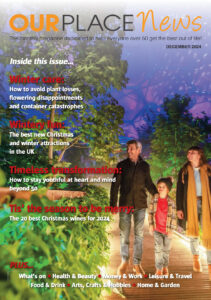There’s no better time to start than Big Schools’ Birdwatch. Children are being encouraged to watch and count birds in their school grounds during Big Schools’ Birdwatch (from Jan 8 to Feb 19), sending the results to the RSPB to gain a better overall picture of how birds are faring across the UK.

It’s important research, as wildlife continues to decline, with one in six species at risk of being lost from Great Britain, according to the recently published State of Nature report by leading wildlife scientists. Birds are especially badly affected, with almost half of species – 43% – currently at risk of extinction or threatened, warns the charity.
Parents and grandparents may wonder how they can do their bit to encourage their children to get involved in birdwatching, as research shows that being outdoors and having contact with nature has a positive impact on a child’s learning, physical health and emotional wellbeing.
Even if their school isn’t taking part, you could opt to do the society’s annual Big Garden Birdwatch (Jan 26-28) with your child or grandchild, counting the birds you see in your garden, local park or from your balcony for an hour and recording what you see, in what is the world’s largest garden wildlife survey.
Here, the RSPB offers five ideas to help parents and grandparents encourage their children to get involved and to enjoy birdwatching in years to come.
Help identify birds
Whether you are just watching birds from your window, or have headed to your local park or woodland, it helps if you and your children can identify birds both from their physical appearance and from their birdsong.
For help with identifying what you are seeing and hearing, visit the RSPB website, or seek helpful bird identification guides available online, including Merlin Bird ID.
Feed birds
Feeding garden birds is a great way to get children (and the whole family) interested in the wildlife on their doorstep.
Hang a feeder containing sunflower hearts, which are great for sparrows, finches and tits. Kitchen leftovers including mild grated cheese, unsalted bacon, cooked rice and bruised apples and pears – a favourite with blackbirds – are just some of the household food items which will provide them with the energy they need.
If you have a small outdoor space or balcony, window feeders take up very little space and still allow you to enjoy watching your feathered visitors. You could even make your own DIY feeder, following instructions on the RSPB website. Remember to regularly clean your feeders to prevent disease.
Make a bug hotel
Help your child make a bug hotel, which provides shelter for insects, which are great for pollinating plants and providing food for bigger creatures like birds and bats. You can use things you may otherwise throw away.
Wooden pallets make a great base, and to create the nooks and crannies and little holes that many insects love, use items like hollow bamboo canes, stones, bricks, old wooden planks, straw or hay, moss and pine cones. Build it somewhere sheltered in part shade and watch as woodlice, ants, bees and beetles move in.
Plant for a bird-friendly world
Planting shrubs and trees is one of the best things you can do for nature in your garden. A tree can provide shelter, food and somewhere to nest for a whole range of species. Planting a tree or bush which produces blossom in the spring and fruit or berries in summer and autumn will provide a rich source of food for insects and birds.
They will also provide cover for small animals from predators and give species of all kind protection from the weather. Hawthorn, crab apple and ivy are good options. Pots, planters and hanging baskets all provide easy ways to incorporate plants if you have a small outdoor space. Window boxes, either on window ledges or balcony railings, can also be useful.
Build a wildlife pond
Water provides a fantastic home for amphibians, mammals, minibeasts and other creatures that children will enjoy watching. Water is also essential for birds, particularly in winter and in dry weather.
You don’t need to spend hours digging a big pond. It can also be a shallow water-tight container filled with water, like a dustbin lid, plant saucer or washing up bowl. To encourage different visitors, add a variety of native aquatic plants like water Forget-Me-Not and Frogbit.
For more information on how to register for Big Schools’ Birdwatch 2024, a free activity, visit rspb.org.uk/schoolswatch
(Article source: Silver Surfers)

